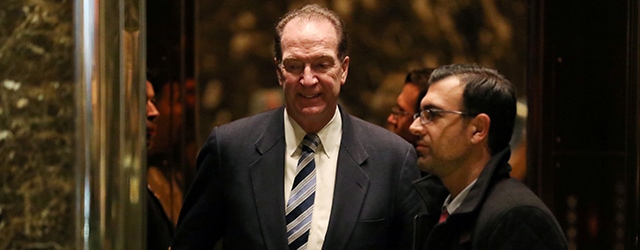David Malpass was one of Donald Trump’s key economic advisors before the election. He is tipped to be appointed soon as US Treasury undersecretary for international affairs.

If confirmed by the US Senate, Malpass will report to the Treasury on the United States’ economic relationships with major international trading partners such as China and Mexico.
He will have to deal with the promised revision of the North American Free Trade Agreement, on which he worked when he was deputy assistant secretary of state for Latin American economic affairs in the George HW Bush administration. He also served as deputy assistant treasury secretary under Ronald Reagan.
A strong advocate of the debt ceiling, and a harsh critic of the expansionary stance of the Federal Reserve under the Obama administration, Malpass often repeats his economic recipes for success in columns he writes for Forbes magazine.
In November, he listed “three major reforms to break out of the malaise” of low economic growth. First, he says, “strengthen the debt limit” and “restrain spending.” His argument is that private-sector confidence wanes when debt is high, because private investors fear future tax hikes.
Second, lower tax rates, “especially the 35% corporate rate.” This will favor investment and bring back corporate earnings that US companies are currently keeping abroad.
Third, “urge the Federal Reserve to wind down its manipulation of interest rates and bond yields.” He accuses the Fed of having “synchronize[d] its interest-rate decisions with the political cycle.”
When he was chief economist at Bear Stearns, Malpass wrote a Wall Street Journal column in August 2007. The column read: “Equity markets have recently lost over $2 trillion in the US and even more globally—many times the likely amount of mortgage and corporate debt losses in the foreseeable future. This is in part a correction from the sharp global equity run-up through mid-July. Current prices still signal growth ahead.”
By 2008, Bear Stearns had collapsed and the deepest recession in more than a generation in the United States soon followed.



